ISSN ONLINE(2319-8753)PRINT(2347-6710)
ISSN ONLINE(2319-8753)PRINT(2347-6710)
B.Lokesh1, Chava Navyasree1, Karthik D C1, Momon Singha1, Dr.E.Madhusudhan2
|
| Related article at Pubmed, Scholar Google |
Visit for more related articles at International Journal of Innovative Research in Science, Engineering and Technology
Our Hover Bike project is a flying motorized machine. It flies with two mini helicopter blades in the front and a jet engine in the back. It will look a lot like a chopper. It will have thrusters to hover, but it will also be able to have wheels, if wanted.Our Hover Bike will be based on present motorcycle technology. We will use the chopper as the basis for our Hover Bike. Current motorcycles have two wheels. Our Hover Bike will change that because it will have thrusters to hover, but it will be able to also change back to having tires.
Keywords |
| Hoverbike, Fabrication, Flying Motor Cycle, Over Lapped Propellers, transportation and military, Catia. |
INTRODUCTION |
| Today’s aerospace industry focuses on two primary areas: transportation and military. The transportation sector focuses on designing larger, more efficient, and more reliable aircraft. The military focuses on designing more effective, maneuverable, and deadly weapons. There is also a private sector in the aerospace industry. Small single engine planes, new helicopters, and other unique flying devices all fall into this category. Beyond the private sector, there are also several commercial applications that could benefit greatly from the hoverbike. |
| hoverbike can be defined as a combination between a motorcycle and a helicopter. Ideally, such a vehicle would be able to allow people to navigate the earth in a new and unique way. A well-designed hovercraft would be able to take off and land vertically, maneuver slowly through tight spaces, and hover in place. To date, no commercially viable hoverbike has been built, though some test prototypes do exist and are in development |
II. LITERATUREREVIEW |
| The original Hoverbike was built by Chris Malloy of New Zealand, after work and studies in his garage in suburban Sydney Australia. This project started out as a hobby, but quickly grew into a commercial enterprise, with interest from people and groups such as universities, farmers, search and rescue, private and military, with notable visits from the US Army G-3/5/7 and Locheed Martin “skunk works” Most of the frame of the original Hoverbike was hand crafted from carbon fiber, Kevlar and aluminum with a foam core. |
III. DESIGNING |
| The main goal of the practical design was to develop a lightweight frame, mount an engine with propellers on it, and implement a drive system to rotate the propellers and achieve lift. The conceptual design considers maneuverability, weight minimization, alternative forms of propulsion, and overall in- flight stability. We used ANSYS and CATIA software for designing and analysis. Fabrication of prototype Hoverbike |
IV. METHODOLOGY |
FrameDesign1 |
| The first frame design developed took a simplistic approach. The main ideas taken into consideration were the housing of the motor and the propellers, a place for the rider to sit. We are using aluminium square tube of 1cm. We bend the aluminium to get our required shape with inner diameter 8.5. Unfortunately it was failed due to maximum stress distribution on the frames and Propellers. |
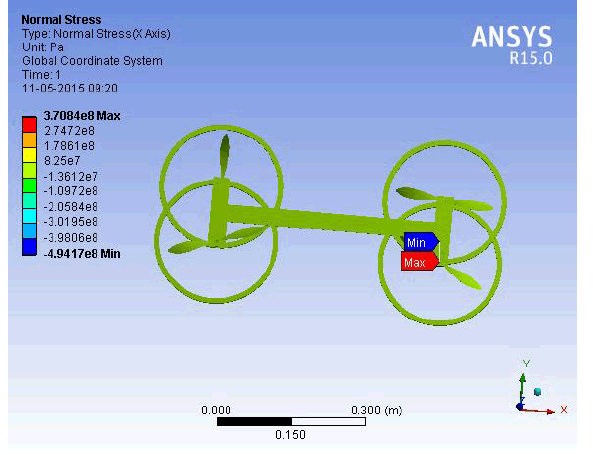 |
Frame Design 2 |
| The second design expanded upon the first design. We are now adding the aluminium ring as it can place motor and we can get overlapping propellers. Structural supports were added to key areas of the frame. The added support below the propellers greatly improved the performance. |
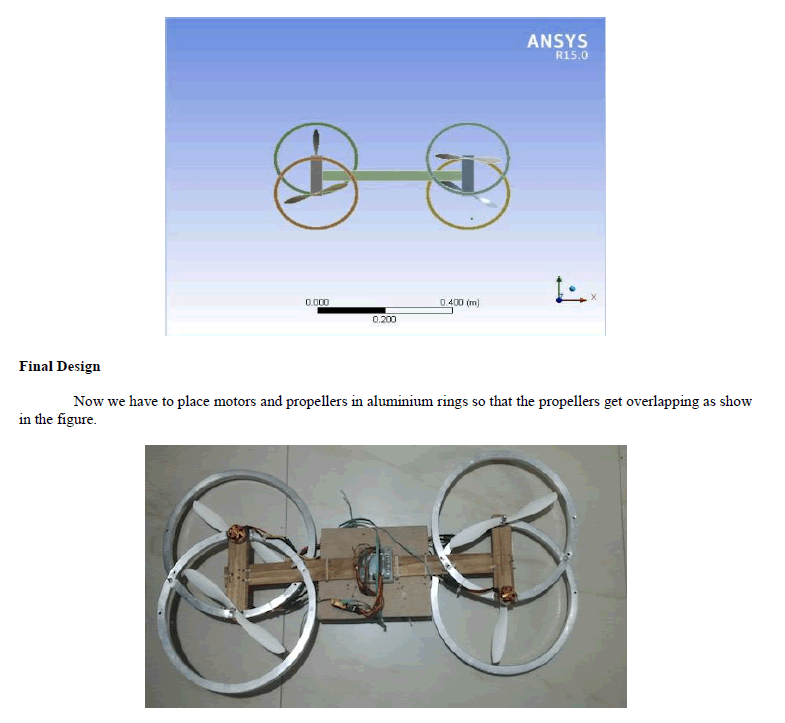 |
Final Frame Concept |
| Body shape. ïÃâ÷ Housing for motor and propellers assemblies. ïÃâ÷ Comfort of the rider. ïÃâ÷ Protection from propellers and debris |
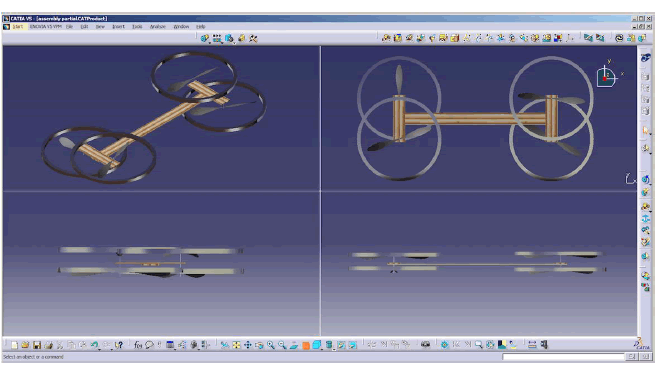 |
Objectives |
| Is in search and rescue operations. • The hoverbike would be able to reach some areas inaccessible to road vehicles and helicopters. • It has the ability to carry supplies if extraction is impossible. • The hover bike could also be used to rescue people who fall through ice. • The response time would be much quicker than a helicopter, and could save many lives. |
V.PROPELLER DESIGN |
Number of Blades for Propeller |
| The lower the number of blades on a propeller, the more efficient the propeller is. The more blades included, the more blade area there is to create more pressure for lift. With the four-foot diameter propeller design, two blades gives plenty of area for lift, and keeps it an efficient design at the same time. We are using 2 blade propellers in our Hoverbike |
Engine Selection |
Electric Motors |
| Using electrical power from a battery to move vehicles has been around for over a century. Early on it was not widely used because it was less understood, and harder to implement. Recently there has been much research done on improving batteries and electric motors to increase efficiency and power generation. The full-range of applications of these technologies has not been fully explored yet |
| Electric motors are quiet, energy efficient, and environmentally friendly. However, the biggest problem with the electric motor is the cost to obtain one with sufficient power capable to lift the bike off the ground. Although the electric motor is not part of the design of the prototype, it is worthwhile to go into detail about how the electric motor would be implemented in future conceptual models. |
Brushless Motors |
| Four electric motors might be used, one to power each propeller. The main advantage of using an electric motor is that it could be mounted directly above the propeller, or integrated directly with the propeller, meaning the motor drives the propeller without any need of a drive train. We are using this motor because it can rotate in both clockwise and anti clockwise. We are using 4 motors and each side 2 motors, two motors is facing upwards and remaining two are facing downwards. |
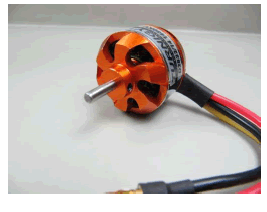 |
Control System |
| As mechanical engineers, only the basics of electronics are covered in our curriculum. However, through research we were able to determine the essential components that are needed to develop a control system for the Hoverbike. |
Circuit Board |
| Kk2 is circuit board that we are using in this model. It is having custom firmware. This is used to control the each motor and complete model. This is also use to tune the flying of the model. This is the main part of the model. |
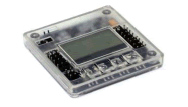 |
ESCS (Electronic Speed Controllers) |
| ESCS are used to control the brush less motors.We are using 4 ESCS. We are using 1ESCS for each motor. |
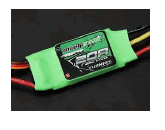 |
Controller |
| We are using avionic remote control, its having frequency of 2.4 GHZ. Its having transmitter and receiver the controls of a model. |
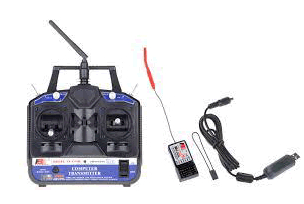 |
VI.RESULTS |
| The experiment was attempted a total of three times. A decision was made to not run the experiment because unprotected housing. Thefirst attempt failed due to maximum stress. The engine would not properly communicate with the ESCs. After some troubleshooting and rewiring, the experiment was run for a third time. The RPM of the engine was recorded in the data. The engine was also having issues when the throttle was engaged. As a result, the data we acquired was the thrust of the propeller set at a 4.5-degree pitch while the motors was idling around 1400 RPM. The propeller was also located exactly 3 feet away from the normal surface. The data can be seen below in table 1 using JavaProp software.The coefficients of lift and drag are given along the propeller based on the inputted geometry. |
JavaProp Inputs and Outputs |
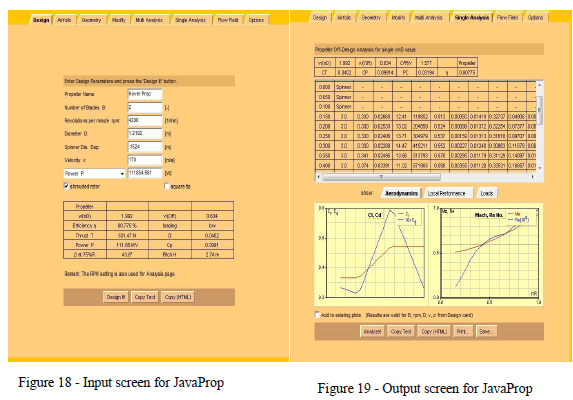 |
References |